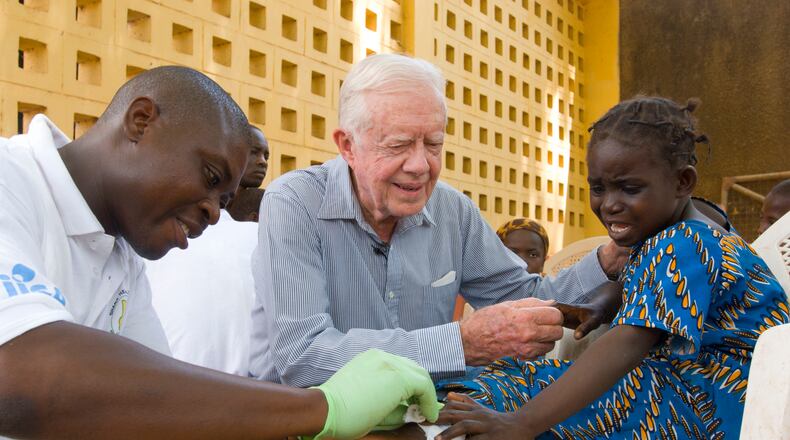When the Carter Center assumed leadership of the global Guinea Worm Eradication Program in 1986, about 3.5 million people in Africa and Asia were afflicted with the debilitating illness caused by the parasite.
Now, the world might be only a few years away from completely eradicating Guinea worm disease. The Carter Center is reporting that, in 2022, only 13 human cases of the disease were reported worldwide. That’s down from 15 in 2021 and represents the lowest number ever recorded, according to the Carter Center.
“We continue to study ways to defeat and prevent this infection,” said Adam Weiss, director of the Carter Center program. “Community members, ministries of health, and our partners are working with us to implement interventions that are effective, including research to find innovative solutions. We won’t stop until the last Guinea worm is gone.”
Credit: SEE CAPTION for RESTRICTIONS
Credit: SEE CAPTION for RESTRICTIONS
Weiss said the latest number isn’t official, but likely will be confirmed in March. Last year, there were six human cases reported in Chad, five in South Sudan, one in Ethiopia and one in the Central African Republic.
If eradicated, the illness caused by Guinea worm would be only the second human disease in history completely wiped out, following smallpox, according to the World Health Organization and the Centers for Disease Control and Prevention.
And, if Guinea worm disease is eradicated, it will be a milestone reached not because of a medicine or vaccine. Experts point to a dramatic change in behaviors and community-based outreach and mobilizations as keys to suppressing the disease.
“Rosalynn and I are pleased with this continued advance toward eradicating Guinea worm disease,” said former President Jimmy Carter, the founder of the Carter Center. “Our partners, especially those in the affected villages, work with us daily to rid the world of this scourge. We are heartened that eradication can be achieved soon.”
Guinea worm disease results from people swallowing parasite larvae in water or undercooked fish. Larvae mate inside the body. Thin female worms can grow up to three feet.
After about a year, the worms try to escape from the body, emerging through painful and disabling skin lesions.
About the Author
The Latest
Featured





